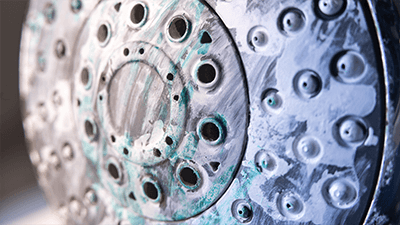courses in your basket.
The ‘Duty Holder’ in buildings and facilities is tasked with ensuring that everything onsite is as it should be and that everyone onsite knows exactly what they are doing. This is a huge responsibility that should never be taken lightly, which is why the appointed duty holder of a building is often a senior building manager or supervisor, or indeed a group of qualified individuals, who should all have up-to-date knowledge of the relevant guidance and Codes of Practice. This is for their benefit; to keep the facility in question open and operating within compliance, but is also necessary to keep members of the public, building staff and building residents safe and well at all times when they are on the premises.
Controlling and preventing the spread of legionella bacteria in facilities is just one part of the duty holder’s role. It is, however, essential in order to identify any risk factors and control outbreaks. If the building in question might be susceptible to bacteria build-up (e.g. a leisure centre or spa), the duty holder is legally bound to carry out risk assessments on all areas that could potentially be affected, as well as preparing for that eventuality. Legionella is a hardy bacteria that can all-to-easily linger in pipework, water storage tanks and outlets like taps and spray-heads. All hot-and-cold water systems should be checked and monitored stringently as part of legionella risk assessments, whether the facility in question is a residential care home or an industrial site.
Where legionella is detected, the duty holder is tasked with appointing a competent ‘Responsible Person’ (RP) capable of controlling the outbreak and managing a written scheme of work compliant with Approved Code of Practice L8 (ACOP L8), which is to be then undertaken and supervised by the duty holder. This is enforced by the Control of Substances Hazardous to Health Regulations Act, and requires the duty holder to check on staff (including RP) competency, prepare and carry out duties stipulated in the written scheme itself and to identify any other risks in the building systems that they are responsible for. Having control over legionella build-up is essential to stop the spread of these bacteria, as it causes Legionnaires Disease in humans when breathed in. The bacteria live only in water droplets, but these can easily be inhaled into the body’s respiratory system. The disease is characterised by pneumonia-like symptoms, including chest pains and difficulty breathing, and it can be fatal in those with compromised immune systems.
ACOP L8 includes clear guidelines for duty holders to ensure that they deal with both the risk and the control of legionella in the right way. As well as identifying and assessing risks, preparing schemes of work and appointing Responsible Persons, duty holders must keep detailed records of all precautions taken to control bacteria build-up. They are responsible for all monitoring of works undertaken and for all staff undertaking the work, and thereby answerable for any failures in compliance. An individual or group of duty holders can even be made to pay the necessary fees should the Health & Safety Executive need to intervene, where such failures have resulted in Health & Safety violations. This is why it is so essential that duty holders take their responsibilities as regards legionella with seriousness and respect.

The duty holder and their appointed RP must manage the written scheme of work while continuing to monitor and risk assess affected areas themselves. It is therefore vital that they keep up to date with the latest industry advice; in particular BS 8580-1 ‘Water Quality: Risk Assessment for Legionella Control.’ This was updated as recently as January 2019 and is applicable for all facilities involved in water storage and usage that present a foreseeable risk of contamination by legionella. The latest guidance provides more specific information for particular facilities, differentiating between leisure, residential and industrial water systems, for example, to help duty holders stay compliant. This latest guide is also more conveniently aligned with the established ACOP L8, to provide a more comprehensive solution for effective and compliant management of all water systems.
Keeping facilities open and useable, while keeping the public and building staff safe, is the sole responsibility of the duty holder. Failure to fulfil this responsibility can have dire consequences for public health, facility owners and their employees, not to mention the duty holder(s) themselves. It is imperative that duty holders everywhere fully grasp the scale of their responsibility, understand the latest guidance and Codes of Practice and ensure that the stipulated steps are taken to assess and control risks such as legionella.
View all of our Legionella Courses here.
For all enquiries call 0333 121 1215 or email info@ppltraining.co.uk.